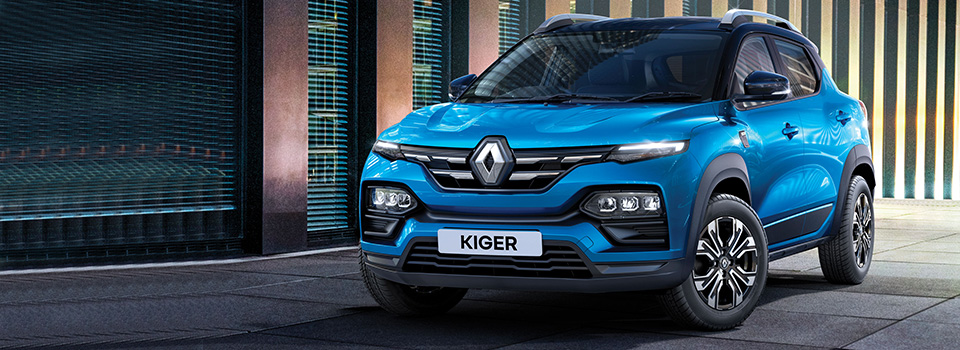Thursday, 28 October 2021
Renault Sandero Stepway Takes On The Urban Jungle
Renault Kiger Vs Nissan Magnite - Differences And Similarities
The much-awaited Renault Kiger sub-4 meter SUV has finally been launched in SA.

The new Renault Kiger is priced between R199,900 - R289,900. It is positioned against the likes of the Tata Nexon, Hyundai Venue, Kia Sonet and others in the segment. This is Renault’s first sub-4 meter SUV in India. It will be produced at the Renault-Nissan alliance’s manufacturing plant in Oragadam near Chennai. In fact, Nissan’s sub-4 meter SUV – the Magnite is also produced at the same unit. In this article, we bring you a comparison between the Renault Kiger and the Nissan Magnite.
SAME PLATFORM
The new Kiger and the Magnite are designed and developed on the Renault-Nissan Alliance’s CMF-A modular platform, which was first introduced in the Triber MPV. It is the same platform that underpins the Kwid; however, the Renault-Nissan alliance has tweaked the platform to make it stronger.
SAME ENGINE
Not just platform, Renault Kiger also shares the engine and gearbox options with the Magnite. The SUVs are available with two engine options – a 1.0-litre 3-cylinder naturally-aspirated petrol and a 1.0-litre 3-cylinder turbocharged petrol. While the former is good for 72bhp and 96Nm of torque, the turbocharged engine churns out 99bhp and 160Nm of torque. A 5-speed manual gearbox driving the power to the front wheels come as standard, while a CVT automatic is offered as optional with a turbo engine. The torque drops to 152Nm when paired to a CVT unit.
The only difference is that the Renault Kiger 1.0L version also gets an AMT (Automated Manual Transmission), which is not available with the Nissan Magnite.
DIFFERENT DESIGN AND INTERIOR
The Renault Kiger and the Nissan Magnite are based on the same platform; however, these two SUVs look completely different from each other. The Kiger looks like a bigger Kwid with aggressive design elements. It comes with a more crossover-ish design, while the Magnite has a more rugged boxy design.
The Renault Kiger comes equipped with a signature winged grille with two horizontal slats and split headlamp set-up with LED DRLs on top and a main headlight placed lower down the bumper. Other styling elements include squared-off wheel arches, dual-tone bumper, black plastic cladding and split tail-lamps. It comes with sloping rear glass, roof-integrated spoiler and uniquely styled C-pillar.
The Nissan Magnite was earlier planned under the Datsun nameplate, which is evident from its front grille. It has Datsun’s grille with chrome surround, sharp headlamps, L-shaped LEDs, aggressive lower bumper with fog lamp housing, faux-skid plate and sculpted bumper. Other design highlights include squared-off wheel arches, roof-integrated spoiler, wrap-around tail-lamps and dual-tone lower bumper.
Kiger Interior – The Kiger comes with an all-new cabin inspired by bigger Renault SUVs. It gets a new dashboard and central console, a floating 8-inch touchscreen infotainment system with Android Auto and Apple CarPlay, a digital instrument console, automatic AC, dual glove box, cruise control, around view monitor, etc. The SUV is claimed to offer an impressive boot space of 405-litres. The SUV also gets an air purifier. It gets a 3D sound system by Arkamys with 8 speakers. The system also automatically adjusts the sound volume according to the speed of the vehicle at higher trim levels.
Magnite Interior- The Magnite has a dual-tone black and grey interior scheme with silver treatment. It gets a freestanding touchscreen infotainment system, digital instrument console, leather-wrapped steering wheel, gear lever and handbrake, multi-functional steering wheel, cruise control and air purifier. The top-end variant gets high-end JBL speakers. The SUV also gets a 360-degree camera.
DIMENSIONS
In terms of proportions, the new Kiger is 3,991mm long, 1,750mm wide and 1,600mm tall, and has a wheelbase of 2,500mm. It is 3mm shorter, and 8mm less wide compared to the Magnite; however, the height of the Kiger is 28mm higher than the Magnite. The SUV offers a boot space of 405-litres, which is segment-leading. This is 69-litres higher than the Magnite’s boot space.
For more information on Renault’s latest vehicles - simply visit the Group 1 Renault website and blog!
.
.
.
Original article source: https://www.indiacarnews.com/
